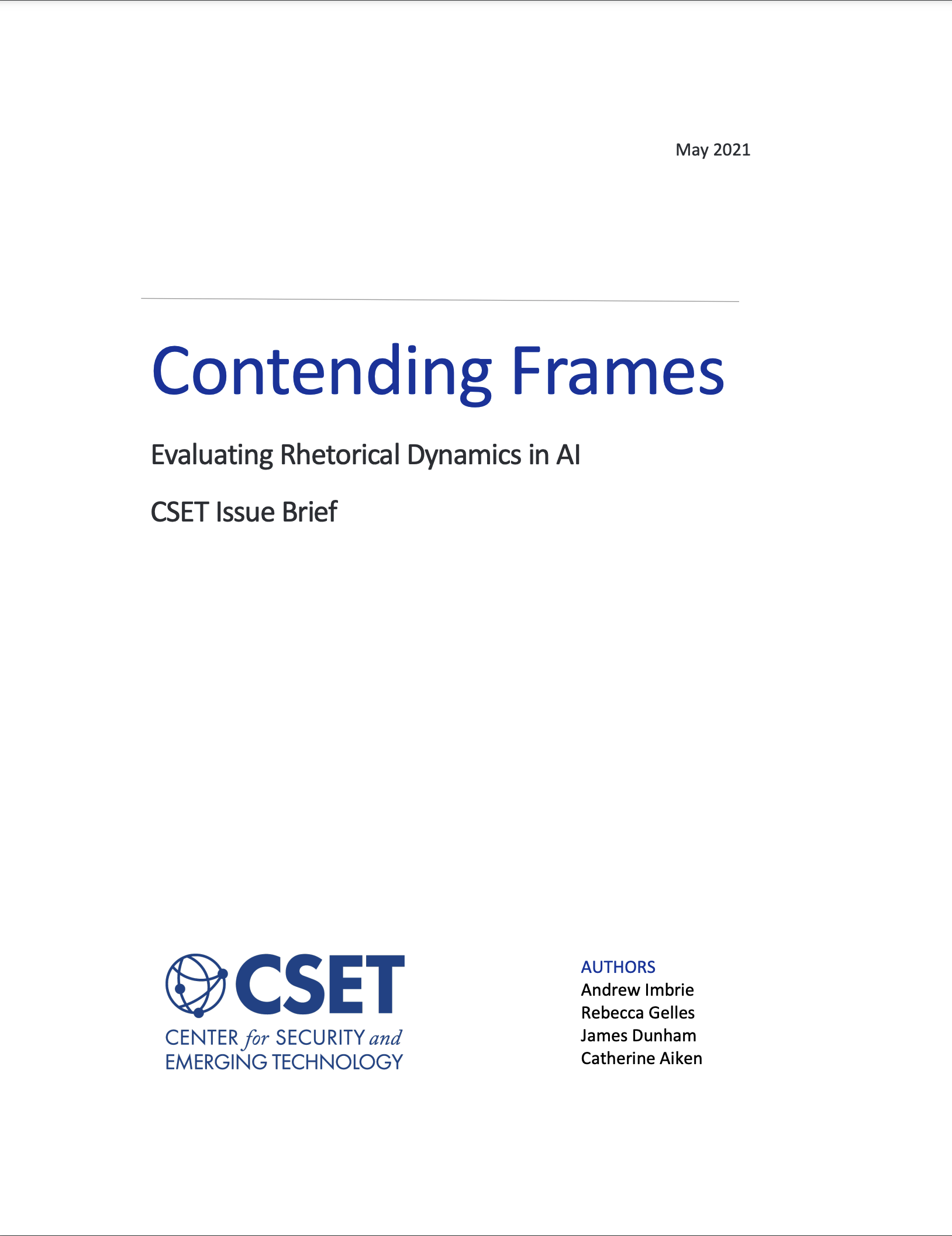Executive Summary
The narrative of an artificial intelligence “arms race” among the great powers has become shorthand to describe evolving dynamics in the field. Narratives about AI matter because they reflect and shape public perceptions of the technology. Policymakers will need to monitor these perceptions closely, as levels of public confidence in AI directly impact the scope for emerging technology policy. In this data brief, the second in our series examining rhetorical frames in AI, we compare four narrative frames that are prominent in public discourse: AI Competition, Killer Robots, Economic Gold Rush, and World Without Work. By searching more than seven million articles on LexisNexis over the 2012 to 2020 period, we find:
- The Competition frame predominates among the four frames under study, both in terms of raw counts and as a percentage of total articles that mention AI, with roughly as many occurrences in 2020 as the other three frames combined.
- While outlets that cater to niche foreign policy audiences, such as Defense One and Foreign Affairs, have become more diverse in terms of discourse around AI, outlets that cater to more general audiences appear to have converged around the Competition frame. This trend suggests that a hardening in foreign policy discourse around AI between 2012 and 2015 may have encouraged a perception of competition among general audiences. Media convergence around a competitive narrative could undermine efforts to bolster global AI standards-setting and collaboration around testing and safety.
- As a share of articles mentioning AI, the Killer Robots frame peaked in 2015. In that year, the Killer Robots frame was almost as prevalent as the Competition frame; today, it is the least common among the four frames under study. This suggests that early concerns about military use of AI may—for now—have become less salient.
- As a share of AI articles, the Economic Gold Rush frame peaked in 2018. Today, it is the second most common among all four frames under study. This frame peaked later than the other frames, suggesting that narratives focused on threat predominated early in the public discourse around AI and only more recently turned to potential opportunities. The Economic Gold Rush frame is often associated with Big Tech companies, which suggests this more optimistic framing could have implications for efforts to regulate Big Tech.
- Political leaders and tech company CEOs are the individuals most commonly mentioned in articles that use the four frames. Prominent academics, authors, and computer scientists are less frequently mentioned. Whether this is a reflection of existing debates between political leaders and tech companies or an indicator of the politicization of AI is unclear, but an intriguing question for possible future research.
- More than 95 percent of articles, distributed among a range of sources, describe the activities of AI companies without using these frames, or any identifiable frame. For example, many articles are straightforward financial reporting. This suggests a majority of media coverage about AI may avoid commentary on the political implications of the technology. This finding also suggests that policymakers may have leeway to shape the public discourse around AI as the technology matures.
